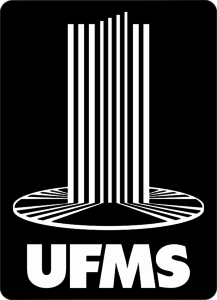Use este identificador para citar ou linkar para este item:
https://repositorio.ufms.br/handle/123456789/4933Registro completo de metadados
| Campo DC | Valor | Idioma |
|---|---|---|
| dc.creator | Beinotti, Fernanda | - |
| dc.creator | Correia, Nilzete | - |
| dc.creator | Christofoletti, Gustavo | - |
| dc.creator | Borges, Guilherme | - |
| dc.date.accessioned | 2022-07-11T09:34:16Z | - |
| dc.date.available | 2010 | - |
| dc.date.issued | 2010 | - |
| dc.identifier.issn | 0004-282X | pt_BR |
| dc.identifier.uri | https://repositorio.ufms.br/handle/123456789/4933 | - |
| dc.description.abstract | OBJECTIVE: To evaluate the hippotherapy influence on gait training in post-stroke hemiparetic individuals. METHOD: The study was constituted of 20 individuals divided into two groups. Group A performed the conventional treatment while group B the conventional treatment along with hippotherapy during 16 weeks. The patients were evaluated by using the Functional Ambulation Category Scale, Fugl-Meyer Scale, only the lower limbs and balance sub items, Berg Balance Scale, and functional assessment of gait (cadence) in the beginning and end of the treatment. RESULTS: Significant improvements were observed in the experimental group including motor impairment in lower limbs (p=0.004), balance, over time (p=0.007) but a significant trend between groups (p=0.056). The gait independence, cadence and speed were not significantly in both groups (p=0.93, 0.69 and 0.44). CONCLUSION: Hippotherapy associated with conventional physical therapy demonstrates a positive influence in gait training, besides bringing the patients' gait standard closer to normality than the control group. | pt_BR |
| dc.language | eng | pt_BR |
| dc.relation.ispartof | Arquivos de Neuro-Psiquiatria | pt_BR |
| dc.rights | Acesso Aberto | pt_BR |
| dc.rights | Attribution-ShareAlike 3.0 Brazil | * |
| dc.rights.uri | http://creativecommons.org/licenses/by-sa/3.0/br/ | * |
| dc.subject | stroke | pt_BR |
| dc.subject | hemiplegy | pt_BR |
| dc.subject | hippotherapy | pt_BR |
| dc.subject | gait | pt_BR |
| dc.subject | horseback riding therapy | pt_BR |
| dc.title | Use of hippotherapy in gait training for hemiparetic post-stroke | pt_BR |
| dc.title.alternative | Utilização da hipoterapia no treino de marcha em indivíduos hemiparéticos pós-acidente vascular cerebral | pt_BR |
| dc.type | Artigo de Periódico | pt_BR |
| dc.identifier.doi | https://doi.org/10.1590/S0004-282X2010000600015 | pt_BR |
| dc.citation.volume | 68 | pt_BR |
| dc.citation.issue | 6 | pt_BR |
| dc.citation.spage | 908 | pt_BR |
| dc.citation.epage | 913 | pt_BR |
| dc.description.resumo | OBJETIVO: Avaliar a influência da hipoterapia no treino de marcha em indivíduos hemiparético pós-AVC. MÉTODO: O estudo constou de 20 indivíduos divididos em dois grupos (A e B); o grupo A realizou tratamento convencional e o grupo B, tratamento convencional e hipoterapia, durante 16 semanas. Os pacientes foram avaliados pela Escala de Fugl-Meyer, Escala de Equilíbrio de Berg, Escala de Deambulação Funcional e a Cadência, no início e no final do tratamento. RESULTADOS: Melhoras significativas foram observadas no grupo experimental incluindo comprometimento motor em membros inferiores (p-valor=0,004), o equilíbrio, em relação ao tempo (p-valor=0,007) porém uma tendência significância entre os grupos (p=0,056). A independência na marcha, cadência e a velocidade não apresentaram relevância estatística em ambos os grupos (p-valor=0,93, 0,69 e 0,44). CONCLUSÃO: A Hipoterapia associada ao tratamento convencional mostra ter influência no treino de marcha, além de tornar o padrão de marcha dos pacientes mais próximo da normalidade em relação ao grupo controle. | pt_BR |
| dc.publisher.country | Brasil | pt_BR |
| dc.subject.cnpq | CNPQ::CIENCIAS DA SAUDE::FISIOTERAPIA E TERAPIA OCUPACIONAL | pt_BR |
| Aparece nas coleções: | INISA - Artigos publicados em periódicos | |
Arquivos associados a este item:
| Arquivo | Descrição | Tamanho | Formato | |
|---|---|---|---|---|
| Arquivos de Neuropsiquiatria.pdf | Article | 217,42 kB | Adobe PDF | Visualizar/Abrir |
Este item está licenciada sob uma Licença Creative Commons


